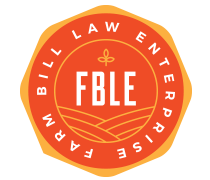Isabel Yin is a law student in the HLS Food Law & Policy Clinic and a guest contributor to this blog.
To the dismay of many lawmakers, farmers, and advocacy groups alike, the September 30 expiration of the 2018 Farm Bill extension came and went with no passage of a farm bill. When Congress returns to a lame-duck session after this year’s election, lawmakers will be faced with the choice of passing yet another extension of the 2018 Farm Bill or alternatively, new farm bill legislation.
Another extension of the bill would be an unpopular course of action. Many lawmakers view a new farm bill as “must pass” legislation, and farmers are urging for a new bill that better protects their interests. Though the House and Senate both released versions of a 2024 farm bill this year—the Farm, Food and National Security Act (H.R. 8467) and the Rural Prosperity and Food Security Act (RPFSA), respectively—neither version gained enough political traction to be passed by Congress. The lack of bipartisanship required to pass a new farm bill has persisted since 2023 but is now heightened by the mismatch between the House and Senate bills’ treatment of the nutrition title.
As one of the most widely impactful and resource intensive sections of the farm bill, the nutrition titles of both the House and Senate bills have been heavily scrutinized by commentators since their release. For instance, heavy criticism has been levied against H.R. 8467’s restriction of mandatory reevaluations of the Thrifty Food Plan (TFP) that threatens to eliminate $30 billion in SNAP benefits over the next decade. Critics argue that H.R. 8467’s few provisions that allow for some expansion in SNAP access (e.g., allowing individuals with previous felony drug convictions to receive benefits and revising income eligibility calculations for older youth) and increased funding to programs like the Gus Schumacher Nutrition Incentive Program (GusNIP) (which incentivizes SNAP users to buy healthy produce) are overshadowed by the long-term effects of such drastic cuts in SNAP benefits. Advocacy groups like the Food Research & Action Center have also pointed to the disproportionate impact these cuts will have for minority women and single parents who account for a large share of those who receive SNAP.
In contrast, the RPFSA would freeze the cost of the TFP (excluding adjustments for inflation), ensuring that an adequate level of SNAP benefits would remain available for recipients even as nutritional guidelines or dietary costs changed. Not only would the RPSFA also include the same aforementioned SNAP accessibility expansions from H.R. 8467 and increases in funding for GusNIP, it would do more to increase food access in other ways. For one, the RPFSA authorizes an additional $10 million in mandatory funding for the Office of Urban Agriculture and Innovative Production, which works in part to improve food access in regions with food insecurity. The RPFSA even includes $16 million in funding ($8 million mandatory, $8 million discretionary ) and authorization for a grant program under The Emergency Food Assistance Program that would distribute culturally relevant foods to areas with a demonstrated need.
Given these competing views on the nutrition title, it will clearly require concerted effort across the aisle to reconcile such differences between the House and Senate farm bills before a new bill can actually be passed. Certain provisions, like the types of SNAP accessibility expansions contemplated by both bills, should require little to no further discussion to retain in a bipartisan bill. But others will be far harder to bridge—the bills’ current approaches to the cost of the TFP are so divergent that a bipartisan solution will probably require concessions and compromises in other titles of the bill at large. For better or worse, several parts of the eventual farm bill will likely look fairly different from the separate proposals considered now. It remains to be seen whether a bipartisan vision of the future farm bill will not only be politically feasible, but also socially and economically desirable for the many stakeholders that await it with bated breath.
The views and opinions expressed on the FBLE Blog are those of the authors and do not necessarily reflect the official policy or position of FBLE. While we review posts for accuracy, we cannot guarantee the reliability and completeness of any legal analysis presented; posts on this Blog do not constitute legal advice. If you discover an error, please reach out to contact@farmbilllaw.org.


